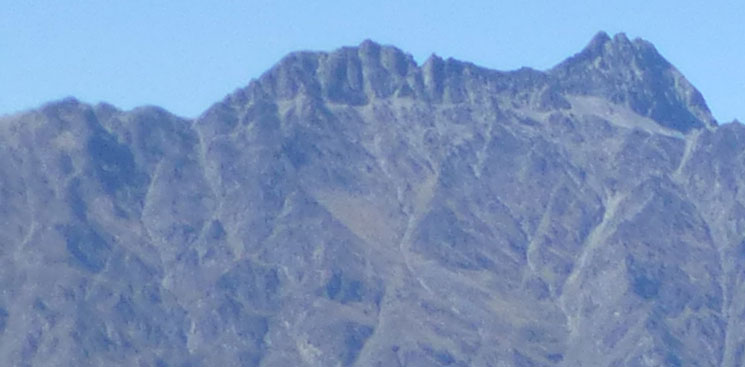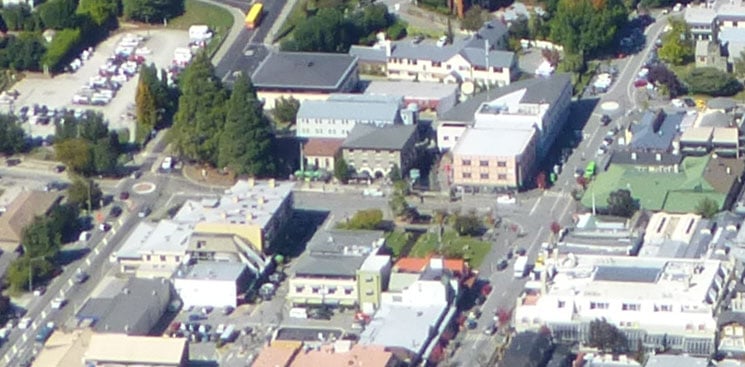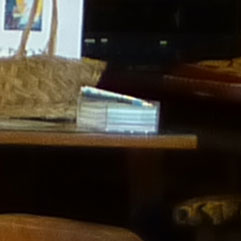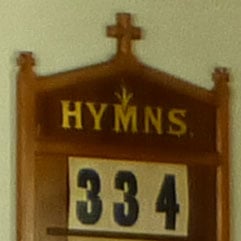Panasonic Lumix ZS20 / TZ30
-
-
Written by Gordon Laing
Quality
The image above was taken with the Panasonic ZS20 / TZ30 with the lens set to 6.1mm (34mm equivalent). In Program mode, the camera opted for its maximum aperture of f3.7, which would seem sensible given the issues of diffraction seen on earlier models, but to be certain I reshot the scene in Aperture Priority at every f-number and discovered detail didn’t begin to really deteriorate until f5.6 and beyond. But crucially the camera delivered higher contrast and sharper details at f5.0 than at larger apertures (smaller f-numbers), so that’s what I’ve used for the crops below. Panasonic has kept the total number of Megapixels the same on the ZS20 / TZ30 as its predecessor, but claims lower noise levels. Unfortunately I didn’t have access to the ZS10 / TZ20 for my latest tests for a direct comparison, but looking at my results for that model, the real-life detail is as you’d expect, at a similar level. But while the earlier ZS10 / TZ20 suffered from a veil of noise textures across its images when viewed at 100% – even at 100 ISO – the output from the new ZS20 / TZ30 looks much cleaner. The details also look crisper and more pleasing under close inspection, confirming Panasonic’s claims. Now don’t get me wrong: these are not the best-looking images I’ve seen from a small sensor camera, but they are an improvement over its predecessor, and that’s even with a longer lens squeezed into a thinner body. That’s a great result from Panasonic, and it sets the benchmark for other 2012 pocket super-zooms to beat. Now let’s see how Panasonic’s claims of lower noise measure-up across the entire sensitivity range in my Panasonic ZS20 / TZ30 noise results.
|
Panasonic ZS20 / TZ30 results : ZS20 / TZ30 quality / ZS20 / TZ30 Noise / ZS20 / TZ30 Handheld Night Shot
Panasonic Lumix ZS20 / TZ30 Handheld Night Shot vs Program (at 400 ISO)
In this example I used the same location used as my High ISO Noise results. Under these conditions, the Handheld Night Shot automatically selected 400 ISO, which made a direct comparison in Program mode easy to achieve. In comparisons with previous models I’ve noticed the Handheld Nigh Shot version look much less noisy, which can give the appearance of a softer image, but with the same degree of actual detail. This is a good result as it’s like applying noise reduction without any smearing. In this example though, the difference is less dramatic. There’s less noise on the Handheld Night Shot version, but not massively so. You’ll notice the biggest differences in the wooden surfaces which are cleaner on the Handheld Night Shot version, in particular the third crop showing the Hymn board. I’ll try to add more comparisons soon at higher sensitivities. In the meantime, check out a selection of shots across the sensitivity range, including the new panoramic feature, on my Panasonic ZS20 / TZ30 sample images page.
| ||||||||||||||||||||||||||||||||||||||||||||||
Panasonic ZS20 / TZ30 results : ZS20 / TZ30 quality / ZS20 / TZ30 Noise / ZS20 / TZ30 Handheld Night Shot
Panasonic Lumix ZS20 / TZ30 Handheld Night Shot vs Program (at 400 ISO)
The image above was taken with the Panasonic ZS20 / TZ30 with the lens set to 6.9mm (39mm equivalent). In Program mode, the camera opted for its maximum aperture of f3.9 throughout the ISO range below. At 100 ISO, pixel-peepers may notice a faint smattering of noise when examining at 100%, but it’s really nothing to be worried about. More importantly it’s a visible improvement over the earlier ZS10 / TZ20, not to mention most other older Panasonic compacts. At 200 ISO, noise textures have become more visible, but again to a lesser extent than the previous model. Likewise at 400 ISO, where the older ZS10 / TZ20 was beginning to look pretty ropey, but the new ZS20 / TZ30 remains very usable. The story continues along this pattern. At 800 ISO, the ZS20 / TZ30 has become noisier, but still contains respectably more detail and fewer processing artefacts than its predecessor. With the sensitivity doubled to 1600 ISO, the earlier ZS10 / TZ20 had become a mush, and while the new ZS20 / TZ30 ain’t looking too pretty at this point, it’s at least a stop ahead. At this point the older ZS10 / TZ20 sensibly gave up, but the new ZS20 / TZ30 goes one step further, offering a 3200 ISO option at the full resolution – and I’d say it looks at least as good as its predecessor did at 1600 ISO. So the new ZS20 / TZ30 may still not deliver the cleanest output from a small sensor camera, but it is a visible improvement over its predecessor – by at least a stop, which isn’t bad considering the resolution has remained the same. I’d ultimately have preferred Panasonic to drop the resolution from 14 to 12 Megapixels and use the same sensor as the Lumix FZ150 for even better results, but clearly the company believes the pocket super-zoom market is driven by numbers, so if not increasing, then maintaining resolution between models is important. Revealingly this is opposite Canon’s strategy which dropped resolution to achieve better quality on its most recent HS series compacts, and it remains to be seen if its 2012 pocket super-zooms, the SX240 HS and SX260 HS, will match or beat their big rival. I will of course update this page when we’ve tested the ZS20 / TZ30 against other 2012 pocket super-zooms, but for now I’m very happy to report it represents a visible improvement over its predecessor as Panasonic claims. Considering image quality was my major bugbear with the earlier ZS10 / TZ20, this is good news all round for the new model. This isn’t the end of the story though as the ZS20 / TZ30 also offers a Handheld Night Shot mode which combines multiple exposures taken in a burst into a single image to reduce noise levels. See how it performs in my Panasonic ZS20 / TZ30 Handheld Night Shot results page, or skip straight to my selection of Panasonic ZS20 / TZ30 sample images.
|
Panasonic ZS20 / TZ30 results : ZS20 / TZ30 quality / ZS20 / TZ30 Noise / ZS20 / TZ30 Handheld Night Shot























